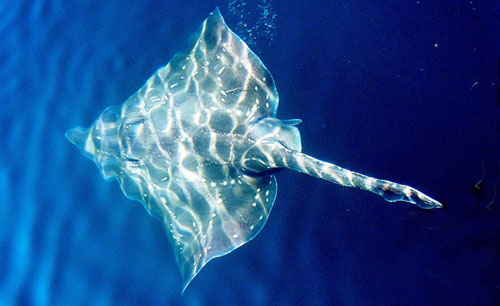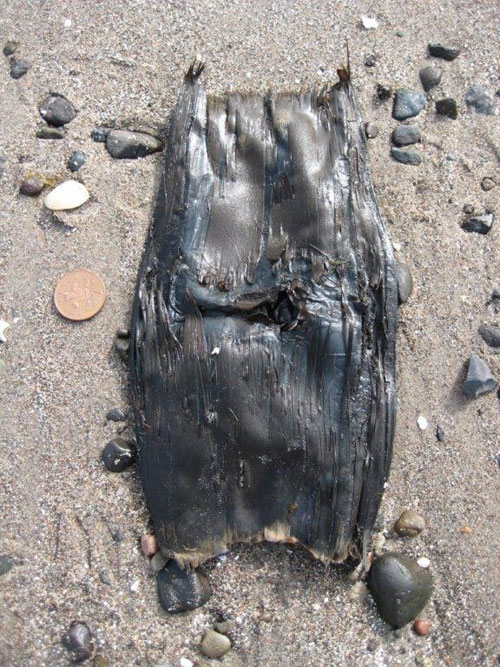WALKERS, divers and fishermen are being asked to keep an eye out for skate egg cases – to help learn more about the breeding habits of the huge fish.
Scottish Natural Heritage are calling on the help of the public to report sightings of the tough, leathery eggs belonging to the critically endangered species.
A Marine Protected Area was set up between Loch Sunart on the west coast of Scotland and the Sound of Jura in Argyll last year, in a bid to protect the rare fish.

As its name suggests, the common skate was once widely distributed and was an important part of the inshore commercial fishery.
However, the numbers of skate have fallen dramatically in most coastal areas of the UK and it is now classed as critically endangered.
Living in deep, dark water, common skate grow to up to 3m in length, live for up to 100 years and weigh over 15 stone. They are the largest species of skate in Europe and research shows that although most fish move only small distances, they can swim for more than 200 km.
Like some other sharks, skates and rays, common skate reproduce by laying tough, leathery egg cases on the seabed which often become trapped between rocks by the curved ‘horns’ at the corners of the case.

Each egg case holds a tiny embryo which develops over several months into a miniature skate. Once the tiny fish has hatched, the egg case, also known as a mermaid’s purse, often washes ashore on nearby beaches.
Jane Dodd, SNH marine operations officer said: “We’d like everyone in Argyll to look out for skate egg cases, particularly people going to the beach over the summer holidays.
Mystery
“If you are a diver and remember seeing them on a dive please scour your log book and let us know where, when and how many you saw – even if you can only give us approximate dates and locations this might help us solve the mystery of when and where skate lay their eggs.
“Common skate egg cases are the largest egg cases you are likely to find – and the rarest. They are about the size of an A4 sheet of paper – roughly 30cm long and 15cm across – with short slightly curved “horns” at the corners, so they are easy to distinguish from other shark and ray egg cases which are much smaller.
“Newly hatched egg cases are olive green and leathery and older ones are black but if they have dried in the strandline, which is probably the best place to look for them, they can have a coating of brown, papery, bark-like material. For more information about what to look for join the Shark Trust Great Eggcase Hunt athttp://www.eggcase.org. It will help you identify any egg cases you find.
“Please take away any skate egg cases you find on the beach so they won’t be reported again by someone else and email us at [email protected] with the location, date and time you found them. I
“f you can attach a photo of the egg case as well, with a ruler or a 2 pence piece for scale, that would be great. You can also ring me at the SNH office in Oban on 0300 244 9360. We will forward on any sightings of common skate egg cases to the Shark Trust. Any other shark or ray egg cases you find can be reported straight to the Shark Trust Great Eggcase Hunt.”
